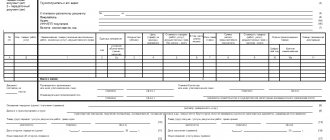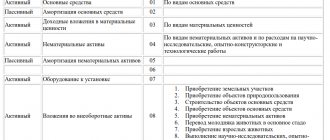What the law says
Taxation issues for simplifiers are regulated by Chapter 26.2 of the Tax Code of the Russian Federation.
Tax payers under this special regime can be both legal entities and individual entrepreneurs.
When calculating tax, there are 2 rate options:
- 6% – only from “Income”;
- or 15% – from “Income minus Expenses”.
Let us immediately note that in 2021 there were practically no legislative changes related to the calculation of tax under the simplified taxation system.
From January 1, 2021, pension and medical contributions do not depend on the minimum wage. Their amount for a simplified individual entrepreneur without staff is fixed (Article 430 of the Tax Code of the Russian Federation):
- RUB 29,354 – pension contributions (for income over 300,000 rubles – plus 1% of the excess of this amount of income for the year);
- 6884 rub. – medical.
Only an individual entrepreneur at the “Income” object can reduce the tax on all contributions at once (i.e., the 50% limit does not apply).
Also see “Fixed insurance premiums for individual entrepreneurs “for themselves” in 2021: amounts and payment.”
The calculation procedure and payment deadlines for the simplified tax remain the same:
- I quarter – until April 25, 2019;
- first half of the year – until July 25, 2019;
- 9 months until October 25, 2021.
At the end of the calendar year, the remaining tax is calculated and paid. The deadline is the same as for filing a tax return:
- for individual entrepreneurs - no later than April 30, 2021 (taking into account the postponement - immediately after the first May holidays);
- for legal entities until April 1, 2021 inclusive.
Also see “Deadline for payment of the simplified tax system in 2019: table for organizations and individual entrepreneurs.”
Accounting options under a simplified taxation system
Keeping accounting under the simplified tax system for companies became mandatory after the adoption of the new law on accounting under No. 402-FZ of December 6, 2011.
The same law established the possibility of using simplified methods of accounting for small businesses (SMB), which, for the most part, include firms operating under the simplified tax system. Firms operating on a simplified basis, but not small enterprises, as well as “simplified” companies that have the risk of switching to OSNO, carry out accounting under the simplified tax system in full according to the rules of accounting legislation. This accounting option is also preferable for companies that work steadily on the simplified tax system, but use accounting data to obtain detailed information about the state of affairs in the organization and economic analysis of activities.
Options for conducting simplified accounting for small businesses are contained in 2 documents:
- Order of the Ministry of Finance of Russia dated December 21, 1998 No. 64n, indicating the possibility of organizing accounting (clause 21):
- without using property registers of a small enterprise (simple form);
- using registers of such accounting (register forms are given as appendices to the order);
- complete, carried out through double entry using the accounting registers of SMP assets;
- abbreviated, in which accounting is carried out through double entry without using the accounting registers of SMP assets;
- simple, carried out without the use of double entry.
The accounting methods proposed by the IPB RF are characterized by certain features of the management methodology and are preferable for each of them for their own circle of small businesses:
- Full simplified accounting is carried out according to generally established accounting rules, but allowing for some simplifications (non-application of a number of accounting standards, reduction of the chart of accounts, simplified accounting registers, the possibility of correcting errors of previous years by the current year). It is preferable for SMEs conducting diversified activities that require recording of all its aspects, but allowing for the sufficiency of aggregated indicators for its assessment.
- Abbreviated simplified accounting is limited to keeping records in a ledger for recording facts of economic activity, which is a single table in which all events are reflected in double entry. This method is possible for small SMEs conducting monotonous activities with a small number of transactions that require the use of a very limited number of accounting accounts.
- Simple simplified accounting is also kept in the ledger of all facts of economic activity in the form of a table, but without the method of double entry. This method is only available for micro-enterprises.
For companies that have the right to simplified accounting, current legislation allows for the possibility of conducting it on a cash basis (clause 12 of PBU 9/99 and clause 18 of PBU 10/99).
Which commercial organizations have the right to use simplified accounting methods, including simplified financial statements? The answer to this question is in the ConsultantPlus system. Get a free trial and proceed to the 2021 Accounting Guide.
Read about the differences between the accrual method and the cash method here.
However, there are no recommendations for its organization. Most likely, this is due to the fact that cash accounting does not meet the main task of accounting: to provide complete and reliable information about all the facts of the company’s economic activities. When applying the cash method in accounting, not only the real picture of the economic life of the organization is distorted, but also its financial statements. Therefore, it is still better to conduct accounting using the accrual method, and the cash method can only be recommended as a method of maintaining tax accounting. In particular, it is this method under the simplified tax system that paid income and expenses taken into account when calculating tax are reflected in the book of income and expenses, which, when simplified, is a mandatory tax register (Article 346.24 of the Tax Code of the Russian Federation).
Read about the accrual method in accounting in the material “What is the essence and features of the accrual method in accounting .
Taking into account the fact that accounting is carried out in accordance with the procedure established by the current law on accounting and PBU, and tax accounting according to the rules of the Tax Code of the Russian Federation, accounting and tax accounting data will almost always differ. You can try to bring them as close as possible by choosing similar accounting methods. But at the same time, financial statements will always be compiled according to accounting data, and tax calculations will be done according to tax accounting data.
For information on the requirements for financial reporting, read the article “What requirements should accounting reporting satisfy?” .
Not keeping accounting records according to established rules is risky. The current legislation provides for liability for this (clause 3 of article 120 of the Tax Code of the Russian Federation and article 15.11 of the Code of Administrative Offenses of the Russian Federation). Such violations, in particular, include the lack of accounting registers, the absence of primary records and systematic errors in filling out accounting registers.
How to make a calculation
The procedure for calculating the tax of the simplified tax system “Income” is regulated by Art. 346.21 Tax Code of the Russian Federation. To do this, you will need a tax rate (in this case - 6%; for some regions it can be reduced) and a tax base.
What do we have to do:
| 1 | Sum up the income received in fact for each quarter (with a cumulative total) |
| 2 | Determine size:
|
| 3 | Determine the tax base (TB): TB = Income – Contributions |
| 4 | Calculate the advance payment paid at the end of the reporting period (quarter/half-year/9 months). The formula is: AP = NB – Contributions – AVpr АВр – advance payments of tax for previous reporting periods of the year. |
| 5 | Final calculation of the simplified tax system 6%: TAX = NB × 6% – АВр |
Remember that the calculated tax is reduced by the amount of insurance premiums made in the reporting period (+ paid sick leave). For individual entrepreneurs without employees it is 100%, and for legal entities and businessmen hiring staff up to 50%.
Consider both tax and contributions as cumulative total.
It does not matter for what period the contributions are accrued. The main thing is that they are paid in the period for which you are calculating the tax. For example, for contributions for March paid in April, it will be possible to reduce the advance payment for the half-year, and not for the first quarter (letter of the Ministry of Finance dated February 25, 2019 No. 03-11-11/12121).
Peculiarities
Each type of activity has its own nuances. In addition, a lot depends on parameters such as the number of employees. It is worth considering that the regulations on the simplified tax system change almost every year, so it is necessary to constantly monitor new regulations that relate to activities.
Among the features of accounting under simplified tax system 6, several points stand out. All documentation and financial documents are checked thoroughly, as all income and expenses must be taken into account. In addition, all expenses from a separate category should also be recorded, since they can greatly affect the payment of taxes.
Among the differences from other types of taxation, what stands out is that additional mandatory taxation is very high, since the simplified tax does not include numerous amounts and contributions.
Without employees
If an individual entrepreneur does not have employees, then the rate under the simplified tax system can be reduced according to the regulations of a certain subject. There are also no additional contributions to various funds. An individual entrepreneur is more likely to receive tax holidays and other benefits.
With employees
If an individual entrepreneur has employees under his command, then all contributions to the insurance and pension funds will have to be paid for them. In addition, through additional insurance, you can reduce the amount of final tax for the reporting period.
Calculation example
LLC "Guru" is in a simplified tax regime with the object "Income" and has employees. It is necessary to determine the amount of advance tax payments deducted in the reporting periods of 2021.
Actual income, insurance contributions and benefits made, as well as all final calculations are presented below in the table (the amounts of income and contributions/benefits are taken arbitrarily as an example).
The Guru Society reached the end of 2021 with the following indicators:
| Period 2021 | Income on an accrual basis, rub. | Calculated advance tax payment, rub. | Amounts of incremental contributions and benefits that can be deducted, rub. | How much can the advance tax payment be reduced, rub. | Advance payment for tax payable, rub. |
| I quarter | 300 000 | 18 000 (300 000 × 6%) | 10 500 | 9000 (10 500 ˃ 18 000/2) | 9000 (18 000 – 9000) |
| Six months | 800 000 | 48 000 (800 000 × 6%) | 18 500 | 18 500 (18 500 < 48 000/2) | 20 500 (48 000 – 18 500 – 9000) |
| 9 months | 2 000 000 | 120 000 (2 000 000 × 6%) | 50 000 | 50 000 (50 000 < 120 000/2) | 40 500 (120 000 – 50 000 – 9000 – 20 500) |
| Summary of 2021 | 3 000 000 | 180 000 (3 000 000 × 6%) | 102 000 | 90 000 (102 000˃180 000/2) | 20 000 (180 000 – 90 000 – 9000 – 20 500 – 40 500) |
Let us recall that there is an important feature of the calculation of the simplified tax system: when the listed amounts of hospital benefits and insurance premiums are paid by organizations or individual entrepreneurs with employees, a reduction in the advance/tax on the amount of such contributions and/or benefits in general is possible by no more than 1/2 of the advance (see 5th column in the table).
When an individual entrepreneur loses the right to use a simplification
If during the reporting (tax) period the income of an individual entrepreneur exceeded 150 million rubles and (or) the individual entrepreneur did not comply with the above conditions for applying the simplified tax system (established in paragraph 3, paragraph 4 of Article 346.12 and paragraph 4 of Article 346.13 of the Tax Code of the Russian Federation), then such an individual entrepreneur is considered to have lost the right to the simplified tax system from the quarter in which the violations were committed.
The individual entrepreneur must report such loss to the tax authority no later than 15 days.
An individual entrepreneur can switch to the simplified tax system again, but not earlier than a year after losing the right to the simplified tax system.
If, at the end of the year, the conditions for applying the simplified tax system were not violated, the individual entrepreneur has the right to apply the simplified tax system next year.
What do individual entrepreneurs without employees pay?
Individual entrepreneurs who work without hiring labor pay pension and health insurance contributions only for themselves.
EXAMPLE
For the purposes of calculating the simplified tax system “Income”, let’s assume that the income of individual entrepreneur Shirokov in 2021 amounted to 160,000 rubles for each month. Also at the end of December 2021, by virtue of the direct instructions of the law, he transferred to the budget:
- additional contribution to compulsory pension insurance – 1% on income more than 300,000 rubles. for the whole year;
- fixed payment in the amount of 36,238 rubles (for compulsory medical insurance 29,354 rubles + for compulsory medical insurance 6884 rubles).
The table below shows an example of calculating the simplified tax system “Income” in 2019:
Period 2021 Calculation of advance tax payment, rub. Amount to be paid (reduced by previous advances), rub. I quarter (RUB 160,000 × 3 months) × 6% = 28,800 The entire amount of 28,800 rubles. transfer to the budget Six months (RUB 160,000 × 6 months) × 6% = 57,600 RUB 57,600 – 28,800 rub. = 28,800 rub. 9 months (RUB 160,000 ×9) × 6% = 86,400 RUB 86,400 – 28,800 rub. – 28,800 rub. = 28,800 rub. All 2021 (RUB 160,000 × 12 months) × 6% = 115,200 RUB 115,200 – 28,800 rub. – 28,800 rub. – 28,800 rub. = 28,800 rub. That is, for the entire 2021, individual entrepreneur Shirokov had to pay tax to the budget according to the simplified tax system in the amount of 115,200 rubles. But this is not the final calculation.
When calculating the simplified tax system of 6% for individual entrepreneurs, the final tax payable for the entire 2019 year is reduced by a fixed payment (contributions for compulsory medical insurance and compulsory medical insurance) in the amount of 36,238 rubles. We get:
RUB 115,200 – 36,238 rub. = 78,962 rub.
But in addition to 78,962 rubles. You need to contribute 1% of income over 300,000 rubles to the budget. in a year. It turns out:
((160,000 rub. × 12 months) – 300,000 rub.) × 1% = 16,200 rub.
Also see “Rules for calculating advance payments under the simplified tax system.”
Read also
14.03.2018
How can an individual entrepreneur switch to the simplified tax system?
In order for an individual entrepreneur to use the simplified tax system, you need to submit a notification to the tax authority in the form “26.2-1” :
notifications about the transition to a simplified taxation system.
If the individual entrepreneur has just been registered (newly), then the notification of the transition to the simplified tax system is submitted no later than 30 calendar days from the date of registration of the individual entrepreneur for tax registration. In this case, it is considered that the individual entrepreneur has switched to the simplified tax system from the date of tax registration (this day often coincides with the day of state registration of the individual entrepreneur).
If the individual entrepreneur is already operating and uses other taxation systems, then a notification of the transition to the simplified tax system from the beginning of the next year must be submitted to the tax authority no later than December 31 of the current year . That is, such an individual entrepreneur will not be able to switch to the simplified tax system before next year.
With one exception.
An individual entrepreneur who has ceased to be a payer of the single imputed tax (UTI) has the right to switch to the simplified tax system from the month in which his obligation to pay UTII ceased. To do this, he must submit a notification about the transition to the simplified tax system no later than 30 days after the termination of his obligation to pay UTII.
An individual entrepreneur who pays UTII for certain types of activities simultaneously apply the simplified tax system, but in relation to other types of activities.
In the notification, the individual entrepreneur must indicate his chosen option for the object of taxation on the simplified tax system - “income” or “income reduced by the amount of expenses.”
An individual entrepreneur who has switched to the simplified tax system does not have the right to switch to a different taxation regime until the end of the year (as well as to change the variant of the object of taxation of the simplified tax system), but has the right to simultaneously apply the patent taxation system and, as noted above, UTII.
If an individual entrepreneur has ceased the type of activity in respect of which he applied the simplified tax system, he is obliged to notify the tax authority of the date of such termination no later than 15 days.
Read more about the transition to the simplified tax system in the article - Notification of the transition to the simplified tax system.
Tax return simplified tax system
Before April 30, an individual entrepreneur must submit to the tax office at his place of residence (registration of an individual entrepreneur) a tax return on the tax paid in connection with the application of the simplified taxation system for the past tax period (year). This deadline coincides with the deadline for paying the simplified tax system.
There is no point in waiting until the last minute to give up. And it makes more sense to submit your declaration first, and only then pay the tax.
tax return for tax paid in connection with the application of the simplified taxation system.
You can fill out the declaration using numerous software tools or on-line services.





